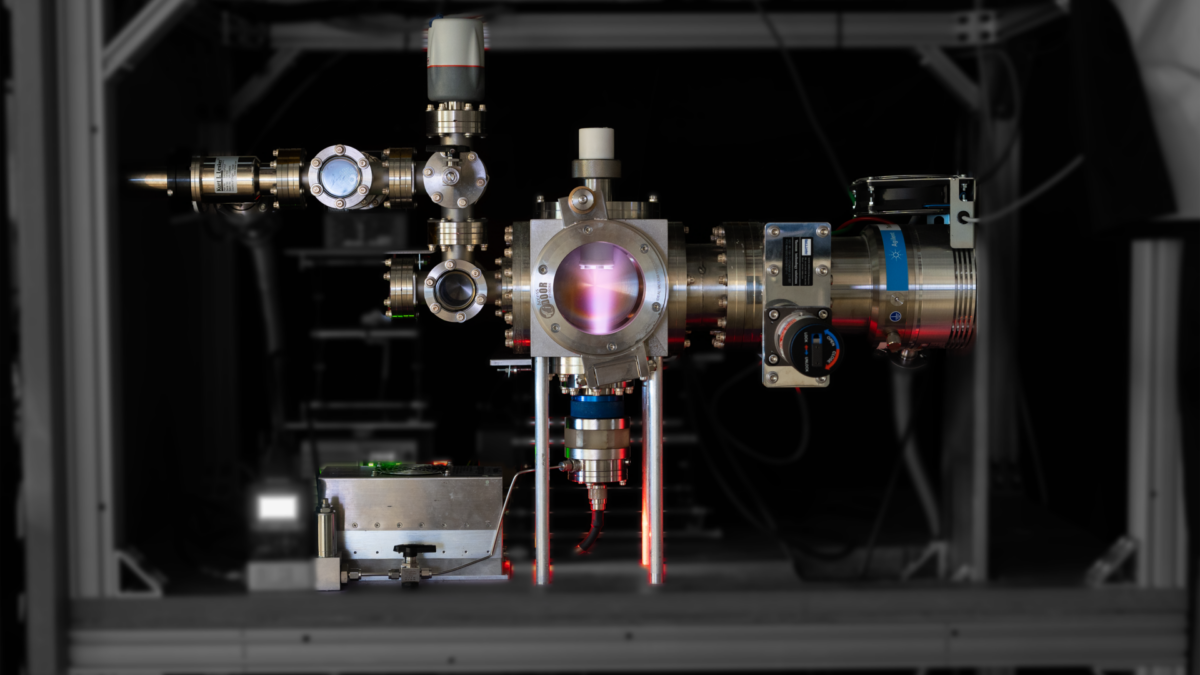Researchers Solve 35-Year-Old Fusion Mystery With Bench-Top Reactor

Fusion is always 10 years away, it seems. To expedite development, some scientists have turned to the prospect of cold fusion—a hypothetical technology that seeks to achieve fusion at room temperature with simpler machines. Needless to say, no one has achieved this vaunted goal, but a team of chemists believes they’re getting closer.
A paper published today in Nature introduces Thunderbird: a particle accelerator roughly the size of a beer fridge. The bench-top reactor operates on plasma science to fuse two ions of deuterium—a hydrogen isotope—to trigger nuclear fusion. By employing an electrochemical cell to simultaneously produce deuterium ion “fuel,” the team boosted fusion rates by 15%, according to the paper. It’s the first real demonstration of a “credible link” between electrochemistry and fusion science—an idea pitched and then dismissed 35 years ago, study senior author Curtis Berlinguette told Gizmodo in a video call.
“What’s special about [our work] is that we combine plasma science with electrochemical science for the very first time,” added Berlinguette, a chemist specializing in decarbonization at the University of British Columbia (UBC) in Canada. The ambition was to “explore science that is unknown,” in hopes of making the engineering aspect of fusion research “much easier to scale [to] translate this technology much faster and easier,” he said.
Meet Thunderbird, your low-budget fusion reactor
Thunderbird consists of three main parts. First, a plasma thruster loaded with deuterium gas ionizes the gas, sending the deuterium ions toward a palladium metal target. Over time, the palladium fills up with deuterium ions, eventually colliding with each other. The reaction triggers both a fusion event and the release of neutrons, which acts as a “hard nuclear signature,” indicating that fusion actually occurred, Berlinguette explained.

Importantly, an electrochemical cell lies on the other side. When this cell is switched on, it splits heavy water molecules to produce and supply deuterium ions to the palladium target—ramping up the reactor’s fuel density and, as a result, the probability of fusion success.
No cold fusion miracles, but still a breakthrough
Thunderbird doesn’t depend on tritium, a rare and frisky isotope commonly used with deuterium for fusion experiments. That said, the team behind Thunderbird isn’t claiming any energy miracles, nor is it anywhere close to replacing what’s already out there, Berlinguette said. In principle, it makes a lot of sense to use tritium to increase the probability of fusion events.
Thunderbird was designed “really just to look at [fusion reactions] from a completely different perspective than ever before,” Berlinguette explained, noting a long-standing controversy in the field over the efficacy of electrochemical approaches to nuclear fusion—a debate that goes back to the potential of cold fusion.
“What we’ve done is provided an experimental validation that’s reproducible that shows how we can use electrochemistry to actually increase nuclear fusion rates,” he said. Accordingly, the paper’s focus was to determine if the presence of a deuterium-producing electrochemical cell would significantly influence nuclear fusion rates.
“This experiment shows that clearly, the answer is yes,” Berlinguette said.
The byproducts of nuclear fusion
“These are exciting improvements, but energy-efficient nuclear fusion remains a challenge,” Amy McKeown-Green and Jennifer Dionne, Stanford researchers both uninvolved in the new work, wrote in an accompanying News & Views article. The use of electrochemistry to improve fusion rates is a “considerable improvement,” but it’s important to note that, “although electrochemistry was used to prepare the target, it does not, in itself, produce fusion—a crucial distinction, given the early history of the field.”
However, McKeown-Green and Dionne agree with Berlinguette that Thunderbird’s approach offers tantalizing opportunities for a “more widespread investigation of low-energy fusion driven by accessible, bench-top nuclear reactors.”
But Thunderbird has offered unexpected applications for non-fusion research. For example, the techniques they used could be useful for engineers working with superconducting metals, and there could also be potential for medical applications in deuterating drugs, Berlinguette added. Again, we’ll have to see, but this latest work demonstrates the power of interdisciplinary approaches to long-standing problems, he said.
“I really believe that to make big breakthroughs, you want to bring in people from different fields,” Berlinguette added. “And I’m hoping this reactor helps achieve that.”
Granted, fusion might still be 10 years away. It might also be 10 years away after that. What stands out most to me, however, is how much cool science is branching out from these different attempts at fusion (call me biased, but seriously, scientists are coming up with all sorts of sick stuff). So if fusion news makes you feel impatient or annoyed, maybe celebrating the progress so far might work as an acceptable remedy.









